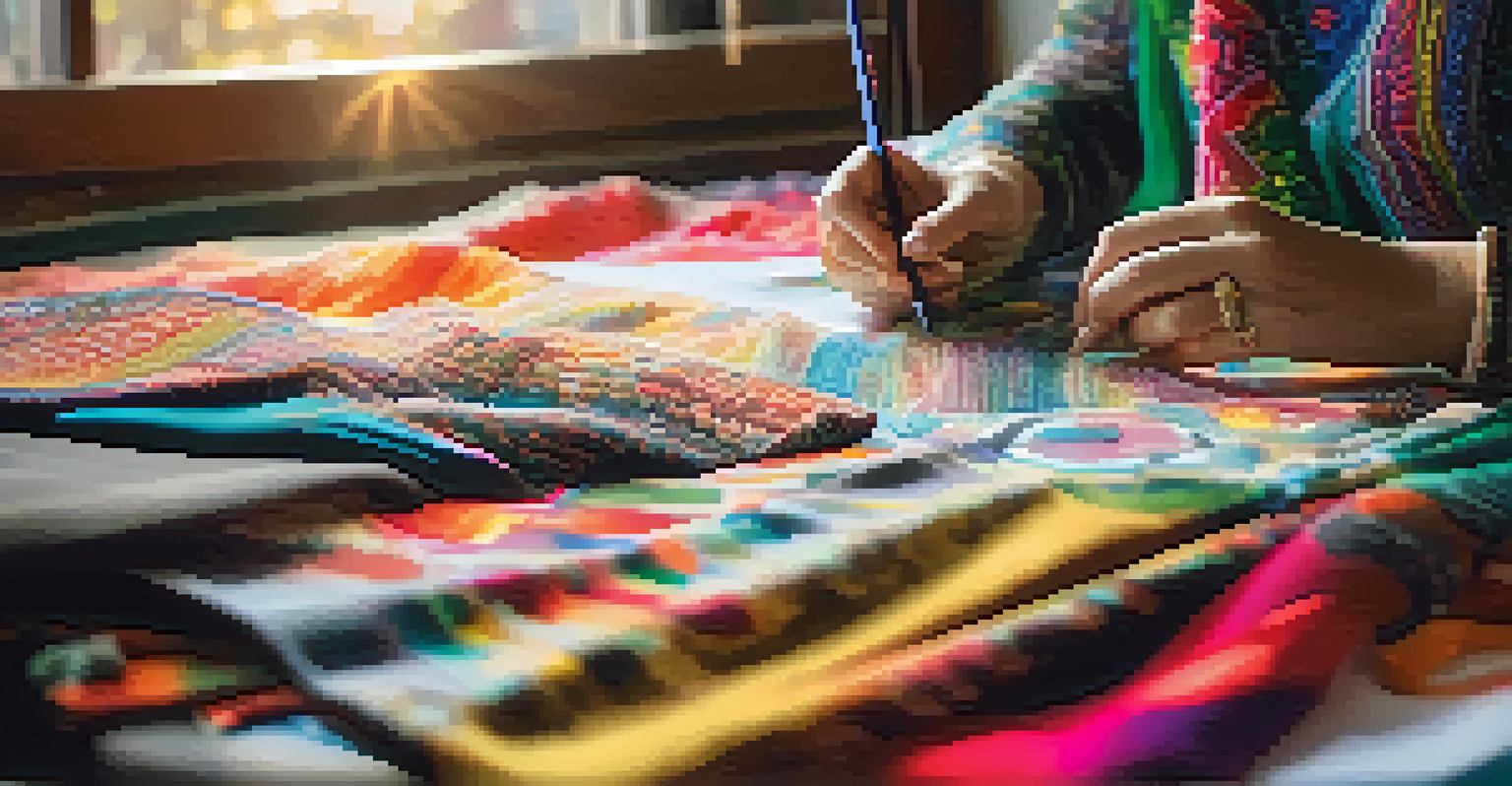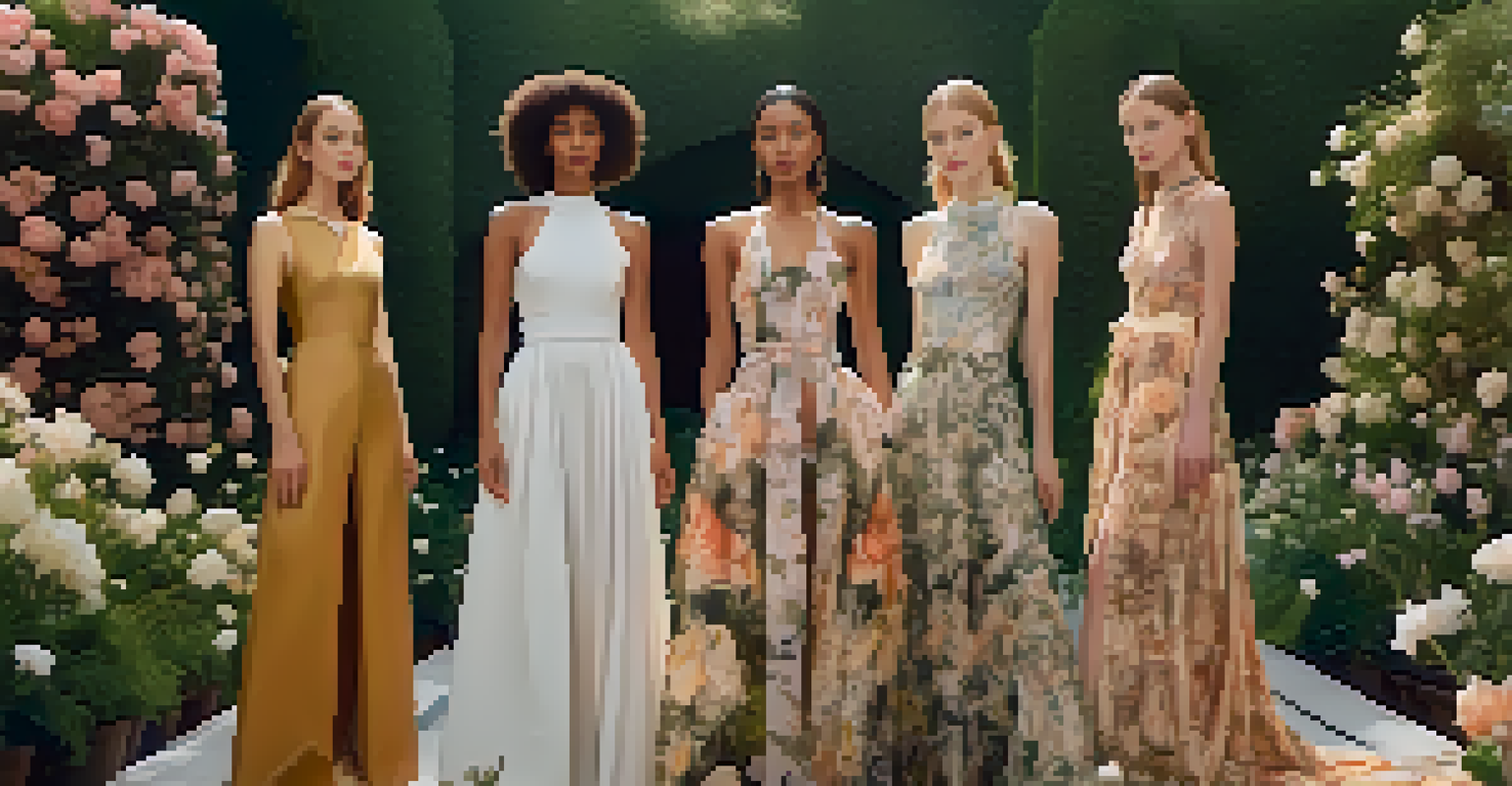The Intersection of Fashion and Performance Art: A New Era

Understanding Fashion as Performance Art
Fashion often transcends mere clothing; it becomes a form of expression. When we think of fashion shows, they are not just about garments but also about storytelling through movement. Designers use models as living canvases, showcasing their creations in a dynamic, theatrical setting.
Fashion is the armor to survive the reality of everyday life.
This blending of fashion and performance art highlights how clothing can convey emotions, narratives, and even social commentary. Just as a play has characters and plots, a fashion show can evoke feelings and provoke thought, engaging the audience in unique ways.
As fashion evolves, so does its relationship with performance art, creating an immersive experience that captivates viewers. This intersection invites us to consider how we perceive both art forms and encourages a deeper appreciation for the artistry behind fashion.
Historical Context: A Brief Journey
The roots of combining fashion and performance can be traced back to the avant-garde movements of the 20th century. Designers like Elsa Schiaparelli collaborated with artists such as Salvador Dalí, blurring the lines between wearable art and theatrical performance. These early experiments set the stage for the vibrant relationship we see today.

In the 1980s and 90s, designers like Jean-Paul Gaultier and Vivienne Westwood pushed boundaries, infusing punk and surrealist elements into their runway shows. These performances were not just about showcasing clothes but also about challenging societal norms and expectations.
Fashion as Expression and Art
Fashion transcends clothing by becoming a dynamic form of storytelling and performance art.
Understanding this historical context helps us appreciate the ongoing evolution of fashion as performance art. It reminds us that every thread and stitch carries a story, often rooted in the cultural and political climate of its time.
Modern Examples of Fashion and Performance Fusion
Today, we see a plethora of events where fashion and performance art converge, such as the Met Gala, where every outfit is a statement piece. Designers like Alexander McQueen have been pivotal in creating theatrical presentations that tell a story, often with a touch of the dramatic and surreal.
Fashion should be a form of escapism, and not a form of imprisonment.
Similarly, performers like Beyoncé have redefined music concerts by incorporating high fashion into their shows. Her outfits not only enhance the visual experience but also symbolize empowerment and identity, resonating with her audience on multiple levels.
These modern examples illustrate how the collaboration between fashion and performance art continues to thrive. They invite us to consider how these artistic expressions can inspire cultural conversations and influence trends across various fields.
Fashion as a Medium for Social Commentary
Fashion is increasingly being used as a platform for social and political commentary. Designers often create pieces that address critical issues, such as climate change or gender equality, encouraging audiences to engage with these topics. This can be seen in collections that incorporate recycled materials or celebrate diversity.
Performance art amplifies this message, transforming fashion shows into statements of activism. For instance, the 2017 runway show by designer Rick Owens featured models of all shapes and sizes, challenging conventional beauty standards and promoting body positivity.
Historical Roots of Fashion Fusion
The blend of fashion and performance art has historical significance, with roots in 20th-century avant-garde movements.
By merging fashion with performance art, creators can reach audiences on a deeper level, sparking conversations that extend beyond the runway. This intersection empowers both artists and viewers to think critically about the world around them.
The Role of Technology in This Intersection
Technology plays a vital role in enhancing the relationship between fashion and performance art. From virtual reality experiences to live-streamed runway shows, tech innovations are changing how we engage with these forms of expression. Designers now have the tools to reach global audiences without the constraints of physical venues.
Moreover, digital fashion is emerging as a new frontier, where garments exist solely in virtual spaces. This allows for limitless creativity, as designers can experiment with forms and designs that would be impossible in the physical world. For instance, brands like Balenciaga have begun creating virtual outfits that can be worn in digital environments.
As technology continues to evolve, it will undoubtedly shape the future of fashion and performance art. This integration opens up exciting possibilities for collaboration, creativity, and audience engagement, pushing the boundaries of what we consider art.
Audience Engagement: The New Frontier
The intersection of fashion and performance art invites audiences to engage in more meaningful ways. Gone are the days when spectators merely watched a runway show; now, they are part of an experience. Interactive installations and immersive environments allow viewers to step inside the art, blurring the lines between creator and audience.
For example, events like the annual Fashion Week often feature pop-up performances that allow attendees to interact with the art. This not only enhances the experience but also fosters a sense of community among participants, creating shared memories that transcend individual perspectives.
Technology Shapes Future Creativity
Technological innovations are transforming how fashion and performance art intersect, enhancing audience engagement and creative possibilities.
This new model of audience engagement transforms how we view fashion and performance art. It cultivates a deeper appreciation for both forms, encouraging us to actively participate in the stories being told.
Looking Ahead: The Future of Fashion and Performance Art
As we move forward, the fusion of fashion and performance art promises to grow even more dynamic. Emerging artists and designers are continually experimenting with new ideas, pushing the envelope of creativity. This evolution is fueled by cultural shifts and technological advancements, paving the way for exciting collaborations.
The future may see more inclusive representations of identity, with fashion shows celebrating diverse cultures and narratives. This approach not only enriches the artistic landscape but also engages a broader audience, making art more accessible than ever.

Ultimately, the intersection of fashion and performance art is an ever-evolving space, ripe with potential for innovation. As artists and audiences continue to explore this relationship, we can expect to witness transformative experiences that challenge and inspire us.